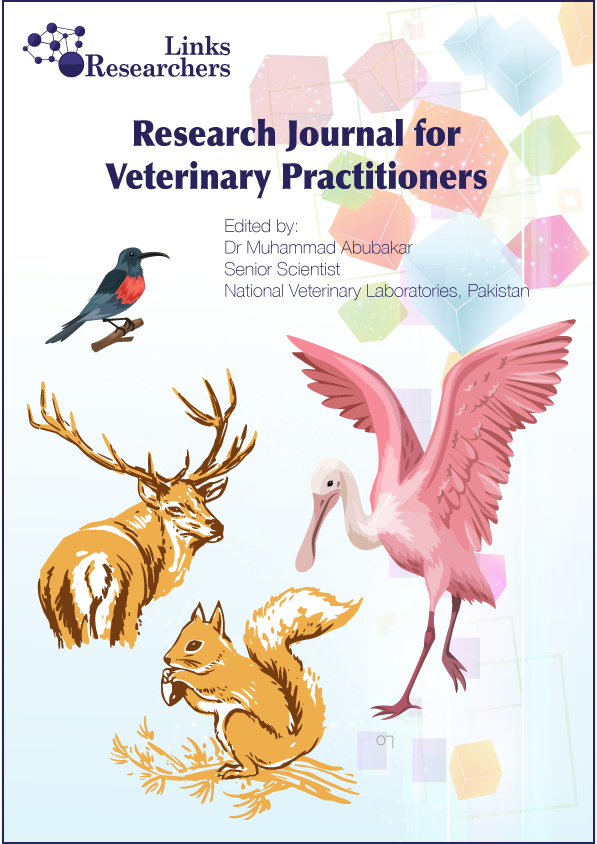Mohammad Hussain Haidary1, Rozanaliza Radzi1*, Muhammad Waseem Aslam1, Seng Fong Lau1, Farina Mustaffa Kamal2, Ahmad Rasul Radzali1
Alexander Tsybulsky1*, Tatyana Tabakaeva1, Anna Klimovich2, Michail Shchelkanov1, Eduard Kostetsky1, Maksim Aliev1, Anton Degtyarenko3
Amira Adel Taha AL-Hosary1, Walaa Mostafa2*
Eman H. Abotalp, Sahar R. Mohamed, Jakeen K. El Jakee
Eman S Ramadan, Mohamed E Ali, Mohamed A Elkhiat
Omnia M. Khattab1, Morcos I. Yanni2, Hala K. Abdelmegeed2, Mahmoud Eliwa1, Naglaa M. Hagag1, Sara M. Elnomrosy1
Tajul Islam Mamun, Jillur Rahman, Mahmudul Hasan, Md. Jamal Hossain, Md Wakil Mahmud and Kamruz Zaman
Khalid Mahmood1*, Muhammad Akbar Khan1, Sayyed Ghyour Abbas1,2, Muhammad Adeeb Babar3 and Muhammad Asim4
Pakistan is water scarce country i.e. less than 1000m3 per capita water resources and contrarily has suffered from the world's worst flood disaster in 2010. Th...
Md Imran Hossen1, Shakhe Reju Ana Boishakhe1 and Mohammad Enamul Hoque Kayesh2*
Enany M.E.1, Fadel Hanaa M.2, Abo-Shama U.H.3, Ahmed Mona M.1, Kholief M.E.A.4*
Mohammad Lalmoddin Mollah*, Arobi Jahan Disha and Dipa Rani Pal
Featuring
-
Prevalence and Associated Risk Factors of flu Virus in Cat at Barishal Sadar in Barishal Distric of Bangladesh
Mohammad Lalmoddin Mollah, Arobi Jahan Disha and Dipa Rani Pal
Veterinary Sciences: Research and Reviews, Vol.10, Iss.2, Pages 98-104
-
Management of Femur Fracture using Simple Intramedullary Steinmann Pin and Orthopedic Cerclage Wire in a Dog
Krishna Adhikari, Suman Poudel and Manoj K. Shah
Veterinary Sciences: Research and Reviews, Vol.10, Iss.2, Pages 88-97
-
Investigation of Prevalence and Risk Factors of Infectious Bursal Disease in Broiler Chicken at Selective areas of Barishal Region in Bangladesh
Dipa Rani Pal, Injamamul Haque Rasel, Tarun Chandra Mondal, Mohammed Lalmoddin Mollah and Shampa Rani
Veterinary Sciences: Research and Reviews, Vol.10, Iss.2, Pages 82-87
-
Prevalence of Lumpy Skin Disease and Associated Risk Factors in the Cattle of Barishal District in Bangladesh
Wahedul Karim Ansari, Md. Yeasin Arafat, Md. Kamruzzaman Akimul, Md. Saifur Rahman, Md. Jahirul Islam, Mahamud Hasan, Md. Ibrahim Mridha, Md. Aminul Islam and Mohammad Enamul Hoque Kayesh
Veterinary Sciences: Research and Reviews, Vol.10, Iss.2, Pages 72-81
Subscribe Today
Receive free updates on new articles, opportunities and benefits

© 2024 ResearchersLinks. All rights Reserved. ResearchersLinks is a member of CrossRef, CrossMark, iThenticate.







